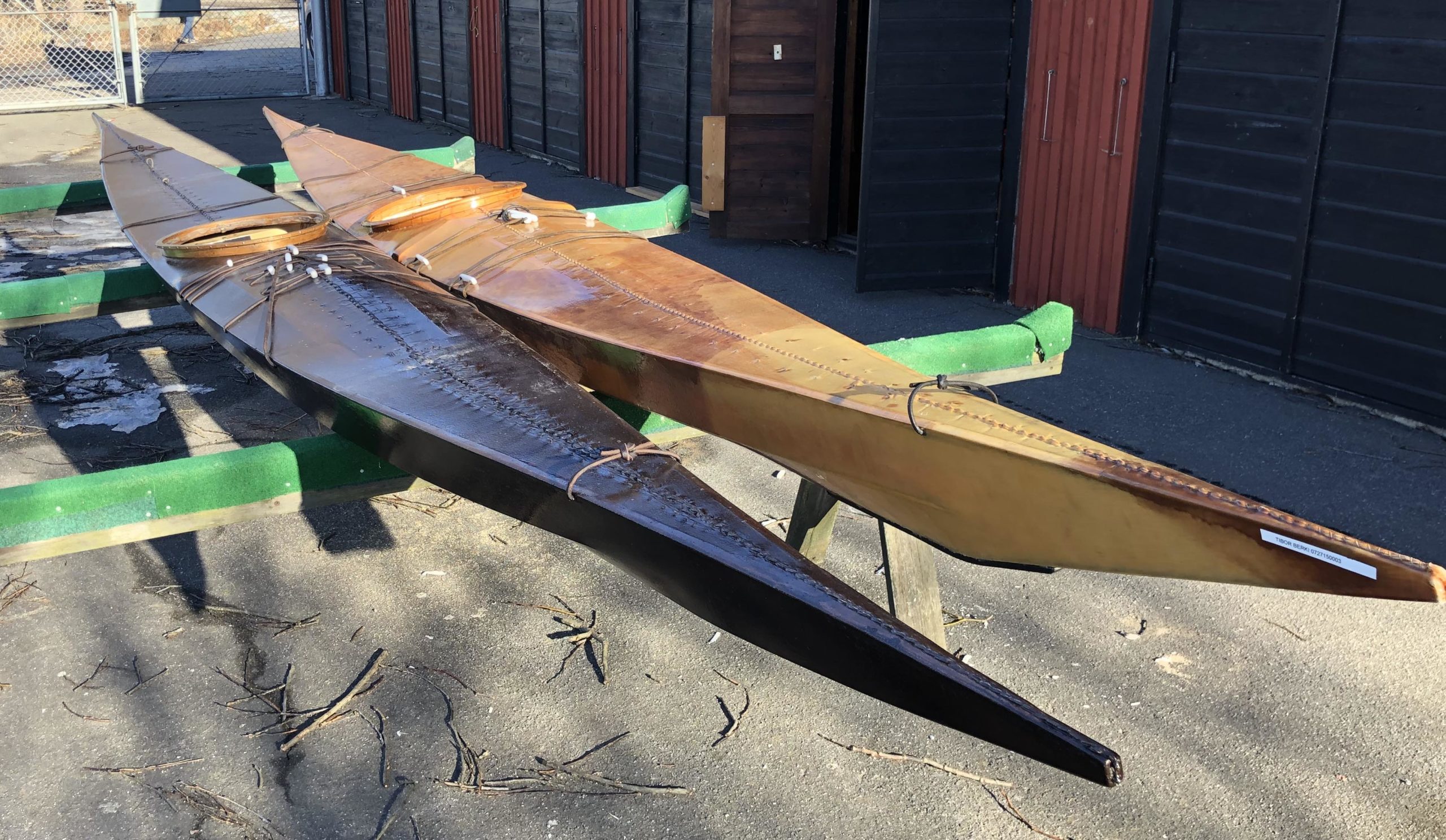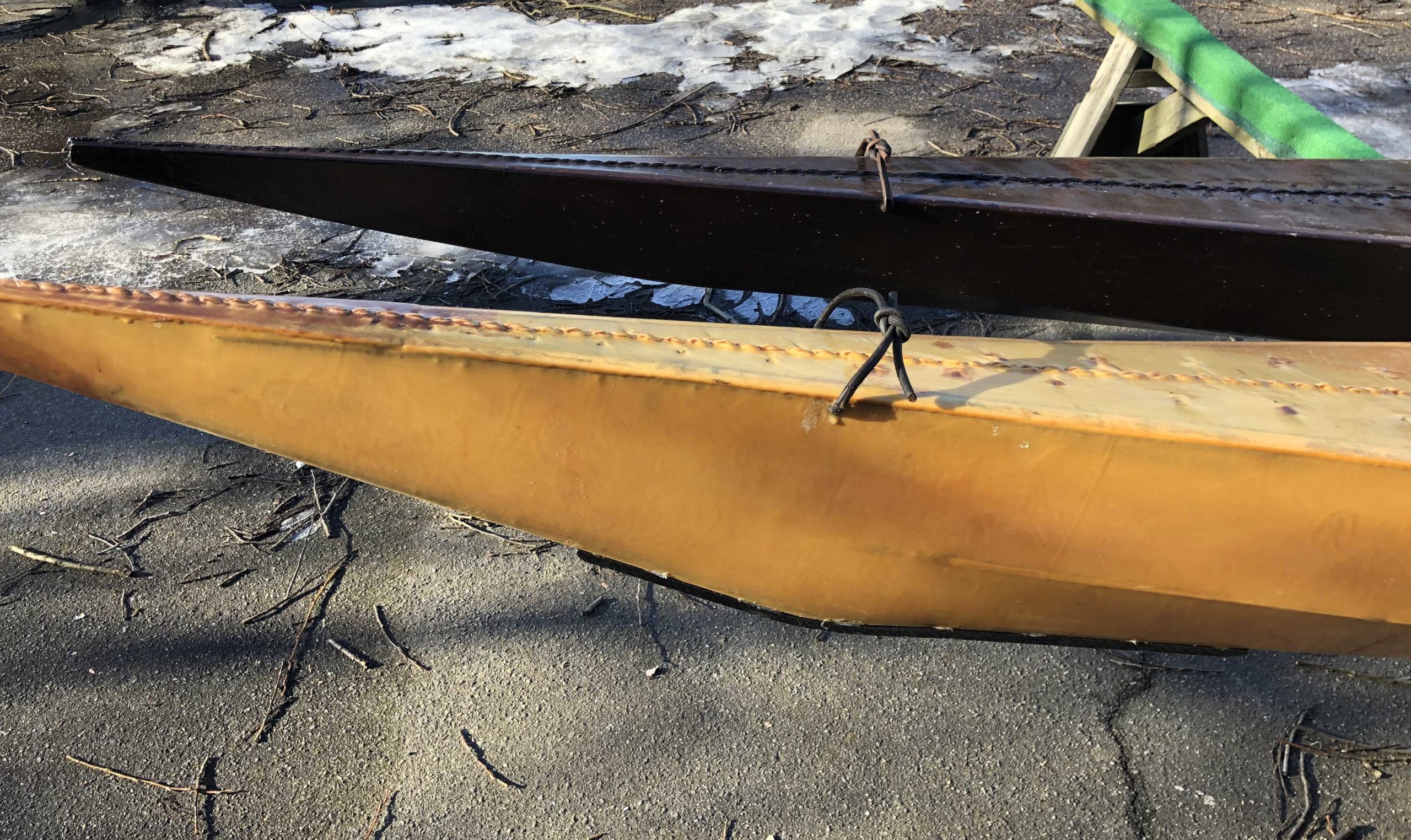I recently happened to have my west and east Greenland kayaks next to each other where you can clearly see the difference in bow/stern height and angle. Now, the WG type hasn’t got a very high bow/stern compared to modern sea kayaks to begin with, but compared to the sleek and low EG it looks huge!



So, what’s the difference in paddling them, you think? Well although they are both low volume kayaks (with the EG approximately 15% lower volume than the WG), the WG gets less submarined in waves and is generally a more sea worthy kayak in rougher waters. When I made it I was nervous about good tracking but I might have overdone it and it goes a little too straight which makes it less fun to paddle.
However you look at it, “better” is subjective. The EG is a joy to paddle, easy to keep at cruise speed and turns on a dime in spite of it’s 5,5m length. With both kayaks, you have to travel light of course. Speaking of light, I made the EG out of Western Red Cedar and the WG of Spruce and Fir. The WG is two kg heavier at 14,5kg, like a battle ship… 🙂
Both kayaks are made with plans from Capefalconkayaks in collaboration for historical accuracy with Harvey Golden. If you think stability is a showstopper with kayaks you probably need to look elsewhere. Personally, I think it’s something you get used to and appreciate more the more you paddle them. In one year of touring every second weekend with the WG, my paddle got hooked up in my map case while I was leaning far out of the kayak fooling around. It’s the only time I ever got wet with all the gear packed in. Needless to say, it was as easy to roll up as being empty.
